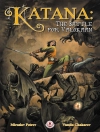The Burial of the Rats Bram Stoker – The Burial of the Rats has the distinctive flavor of an Edwardian gentlemans magazine thriller, and it features all the necessary tropes for this genre: a young man forced to prove his manhood through his mental prowess and physical stamina, a white-knuckled chase scene, last minute escapes, themes of Social Darwinism and Nietzschean philosophy, a sense that the struggle is a coded rite of passage, a distant lover, degenerate villains without mercy or scruples, a battle against the natural elements, and a seemingly hopeless race against time.This type of story would become even more popular after World War One (its heyday being the 20s, 30s, and 40s) and revived after World War Two (where these sorts of action thrillers the lone man fighting for survival against Nature and mankind alike were beautifully adapted for male-centered radio programs like Escape and Suspense). Although he was preceded in the man-on-the-run thriller by Ambrose Bierce (An Occurance at Owl Creek Bridge), Robert Louis Stevenson (The Suicide Club), and Rudyard Kipling (The Man Who Would Be King), Stokers Burial of the Rats is among the first to perfectly epitomize the formula of the modern suspense thriller…
Circa l’autore
Born in Ireland in 1847, Bram Stoker studied mathematics at Dublin’s Trinity College and embarked on his longtime role as an assistant to actor Sir Henry Irving in the 1870s. He also began carving out a second career as a writer, publishing his first novel, The Primrose Path, in 1875. Stoker published his most famous work, Dracula, in 1897, though he died before the fictional vampire would achieve widespread popularity though numerous film and literary adaptations in the 20th century.












